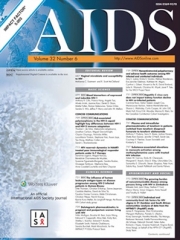Posted on September 24, 2014
Source: AIDS An Official International AIDS Society journal

Decker, Michele R.; Beyrer, Chris; Sherman, Susan G.
Globally, sex workers, that is, individuals who trade sex for money or other goods [1], suffer a disproportionate HIV burden [2]. Most nations provide sex worker-specific HIV infection and risk behavior estimates routinely in the Joint United Nations Programme on HIV/AIDS (UNAIDS) global epidemic reports. By contrast, sex workers remain conspicuously absent in US domestic HIV/AIDS policy. Our national surveillance system fails to disaggregate HIV risk, disease burden, and treatment outcomes for sex workers; rather sex exchange is grouped within ‘high risk heterosexual sex’. The HIV/AIDS report form for case surveillance also omits sex exchange as a potential transmission mode. Our CDC website on sex work and HIV lacks both data and intervention recommendations specific to this population. This dearth of data stymies our ability to develop a national HIV response for those in sex work, and perpetuates their invisibility and marginalization in US policy and interventions.
Recent evidence confirms a robust sex industry in the United States [3], and sex exchange is documented in patient populations of sexually transmitted infections (STI) clinics [4], family planning clinics [5], and substance use treatment programs [6]. The 2010 high-risk heterosexual wave of the National HIV Behavior Surveillance System (NHBS) reported a past-year sex exchange prevalence of 16.6% among men and women combined [7]. Further, the HIV prevalence was significantly higher among exchangers (3.7 vs. 2.1%) [7] suggesting profound HIV implications.
Why the lack of HIV surveillance devoted to sex work in the United States? One likely explanation is the challenge in characterizing sex exchange, as it is widely recognized that many who exchange sex do not identify as sex workers, and that some are involved against their will and/or as minors. Within the NHBS and elsewhere, we lack clarity on the nature of sex trade with regard to context, consent or exploitation, degree of formality, and resources received. An evidence-informed response to this ambiguity requires surveillance with a breadth of individuals who trade sex, with enhanced measures to clarify their experiences, rather than data suppression for fear of misrepresentation.